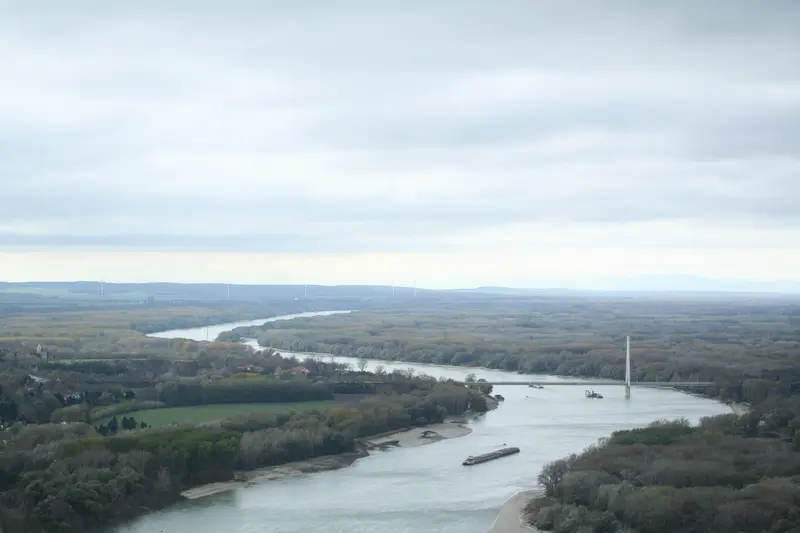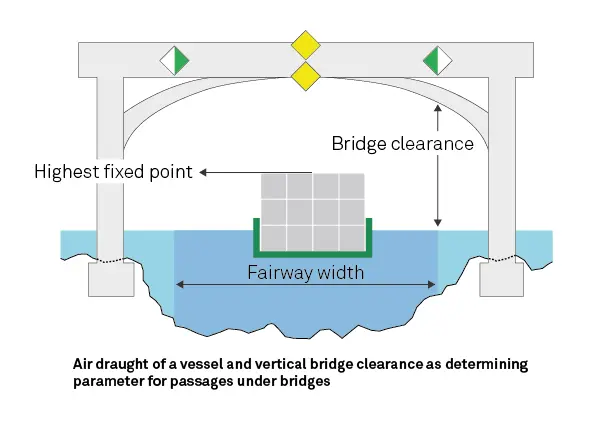Bridges can span a waterway, a harbour or a hydraulic power station, and thereby a lock facility. Water levels can fluctuate dramatically in free-flowing sections of the river, with high water levels having a substantial influence on the potential passage under bridges.
Depending on the distance between bridge pillars, there is at least one or more, and in most cases two, openings for passage where ships can pass safely under the bridge. Where there are two passageways it is usual that one is used for upstream traffic and the other is used for downstream traffic.
The possibility of passing under a bridge depends primarily on the bridge clearance above the water level and the highest fixed point of the vessel. The air draught of a vessel means the vertical distance between the waterline and the highest point of a stationary vessel after moving parts such as masts, radar devices or the steering house have been removed or lowered. The air draught of a vessel can be reduced by ballasting the vessel. This is possible by loading ballast water into ballast tanks or by the loading of solid ballast.
Bridges on the Danube

The international Danube waterway from Kelheim in Southern Germany to Sulina on the Romanian Black Sea coast covers a distance of 2,415 kilometres and is spanned without Borcea-sidearm by a total of 137 bridges.
On the upper Danube (Kelheim-Gönyü) the river is crossed by a bridge every seven kilometres on average. On the middle stretch of the Danube (Gönyü-Turnu-Severin), the average distance between bridges is 25 kilometres, while on the Lower Danube (Turnu-Severin-Sulina) the distance stretches to 116 kilometres.
| Section | Length of section | Number of bridges | Bridge density (length/bridges) |
| Upper Danube (Kelheim—Gönyü) | 624 km | 95 | 6,6 km |
| Middle Danube (Gönyü—Turnu-Severin) | 860 km | 34 | 25.3 km |
| Lower Danube (Turnu-Severin—Sulina) | 931 km | 8 | 116,4 km |
| Danube waterway (Kelheim—Sulina) | 2415 km | 137 | 17.6 km |
The List of Bridges on the Danube, published by viadonau, contains a table with navigational-relevant parameters of bridges spanning the entire Danube. These parameters include location (river-km), vertical clearance at highest navigable water level (HNWL), horizontal clearance at low navigable water level (LNWL), reference gauges, number of openings for passage and allowed direction of passage.

